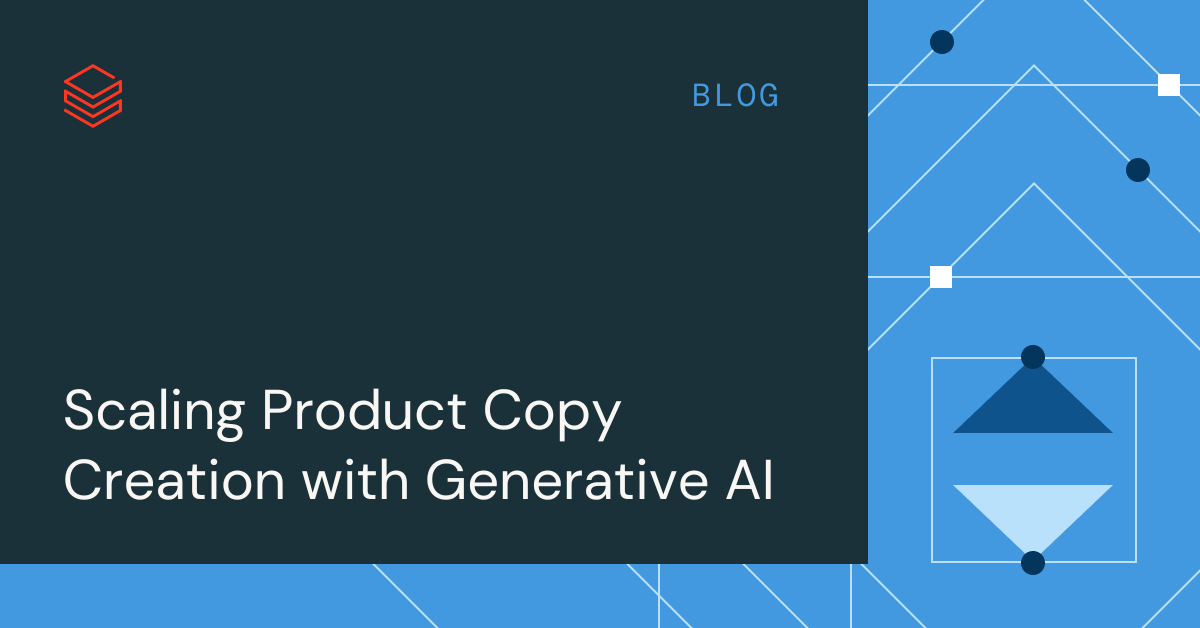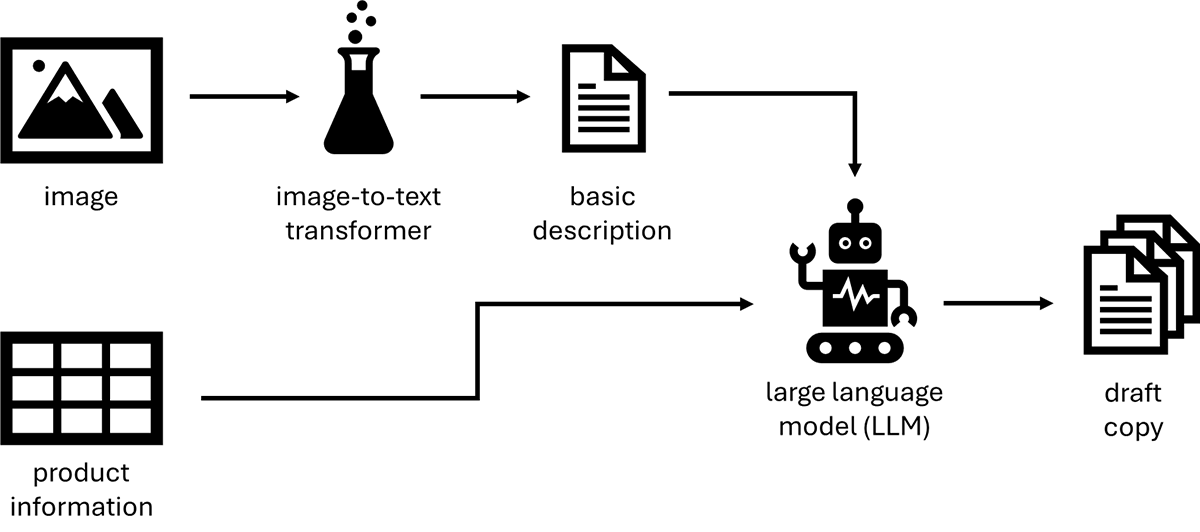Scaling Product Copy Creation with Generative AI

On ecommerce platforms, a good product description can make an item stand out and drive sales. A good product description should not only be accurate, easy-to-read and connect with the needs of the customer, but should reinforce the image of the brand or retailer site.
Within many organizations, small teams of writers labor over the development of these descriptions, also known as product copy. Depending on the needs of the business, product copy can evolve through numerous iterations before the right balance of all the elements required to make a product resonate with consumers while remaining consistent with the brand. It's a time-consuming process that in industries, such as fashion, which experience a high frequency of new product introductions can slow a product's time to availability for sale on a platform.
Using generative AI, copy writers can now jumpstart the creation of new product descriptions. Still relying very much on the knowledge, skill and intuition of the writer, generative AI can be used to extract baseline descriptions from product imagery and combine information about a product to craft draft copy that reflects a tone or style aligned with the needs of a brand. Writers can then use these as a starting point for a draft that's much closer to the end state of the needs of the writer than if he or she started from scratch.
Creating Draft Product Copy from Baseline Data
Products are often registered with an ecommerce platform with basic details about the supplier or manufacturer, construction of the product and its alignment with common retailer departments and categories. A basic description may also be provided, but if it is not, descriptions from images supplied with the product registration can be fed to a simple image-to-text transformer model to extract that information. (Figure 1)

These elements can then be supplied to a large language model (LLM), another form of transformer model, along with instructions about the style or tone of the description to be generated to create a draft product description. Taking advantage of a degree of randomness within the LLM, multiple drafts may be generated, providing the writer with different approaches that may be combined to form the final copy. (Figure 2)

This workflow is an excellent example of the power of generative AI to augment creative functions within organizations. Over time, writer feedback on generated text and associations between generated text and the final copy may be fed back to the LLM in a process known as fine-tuning to help the LLM produce results better aligned with the needs of the writer. But there will always be a need for a human eye and a human touch in crafting the final result.
Enabling the Workflow with the Databricks Data Intelligence Platform
The process described above requires numerous capabilities to be brought together. As the workflow fundamentally depends on a combination of structured and unstructured information inputs (such as the image data), enablement requires access to a platform capable of working with a wide variety of data in a flexible manner.
In addition, the platform must be able to bring together these data with two very different generative AI models and to orchestrate the processing of data through these models as part of an ongoing process before serving data to end users through various user interfaces. Thankfully, all these capabilities can be found in one platform, the Databricks Data Intelligence Platform.
Built on Delta Lake, an open source storage and access format that forms the foundation for a lakehouse architecture, Databricks provides organizations the ability to work with any kind of data they may find in their environment. Through interactive query as well as batch and real-time workflows, this data can be processed in a variety of modes as dictated by the organization's requirements.
As an open platform, Databricks allows organizations to employ the widest variety of open source and proprietary generative AI models. Through its new Foundation Model APIs, many of the most popular of these are readily available at low cost and with minimal configuration.
And to support the end user of the output of the workflows enabled through Databricks, the platform supports a wide range of integrations with common user interface packages and platforms. There is no other platform available that brings together all these elements in one place, and in doing so, Databricks allows organizations to focus on what they want to build instead of how to assemble it.
Want to see an end-to-end example of the workflow above built within Databricks? Check out the free to use notebooks associated with our new Product Copy Generation solution accelerator where we demonstrate all the key aspects of creating product copy using generative AI using the capabilities of the Databricks Data Intelligence Platform.
Never miss a Databricks post
What's next?

Retail & Consumer Goods
September 20, 2023/11 min read
How Edmunds builds a blueprint for generative AI

Retail & Consumer Goods
September 9, 2024/6 min read
